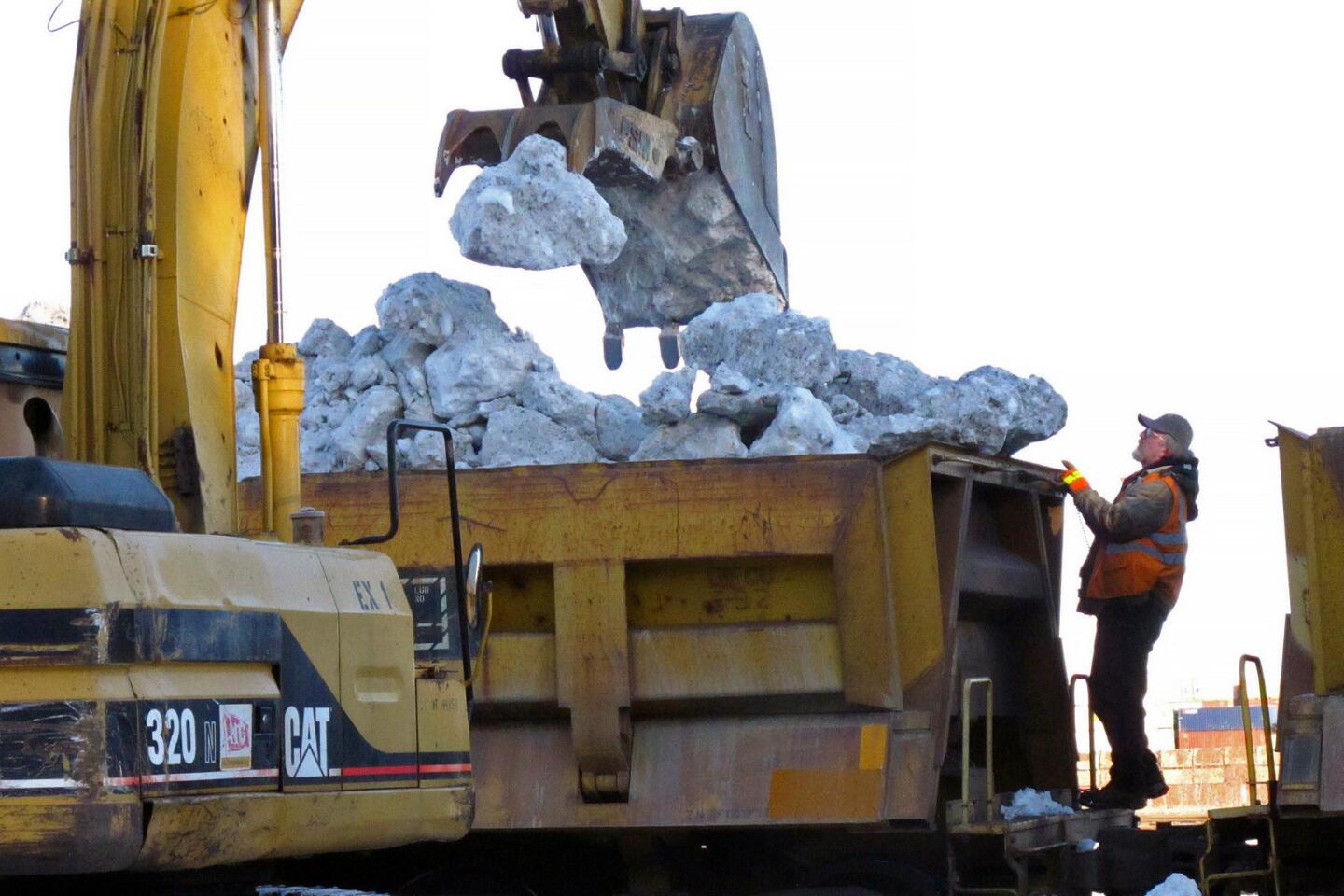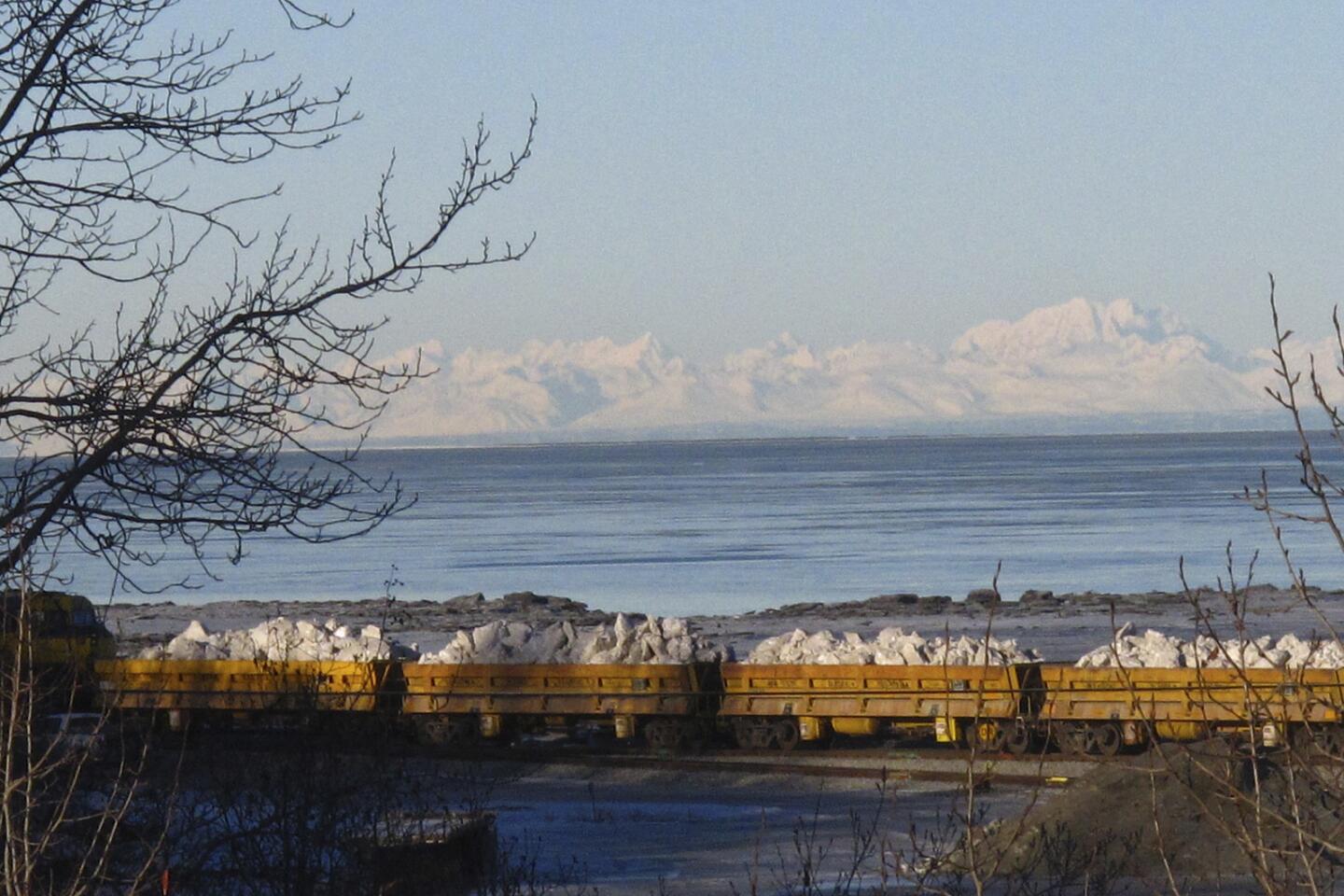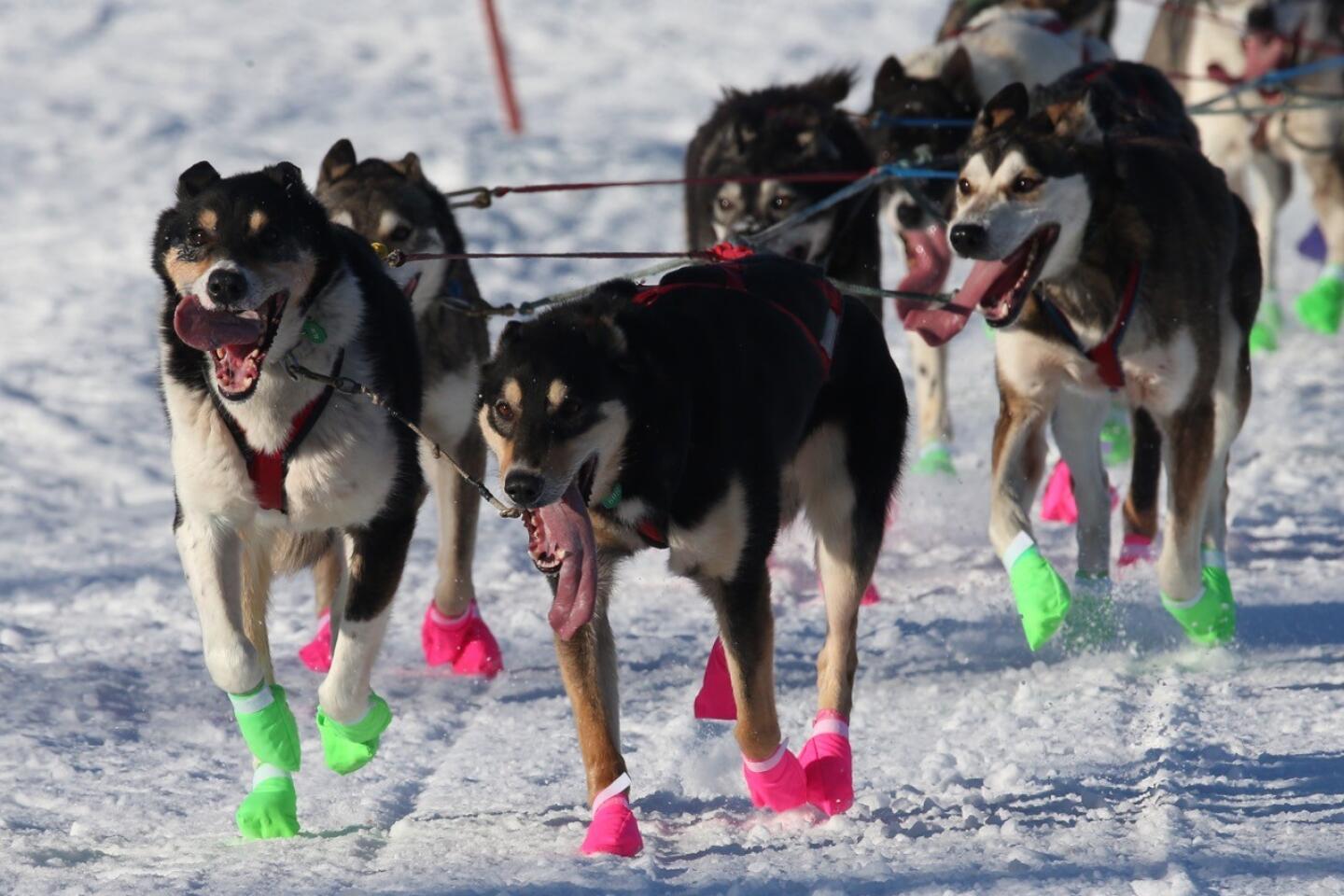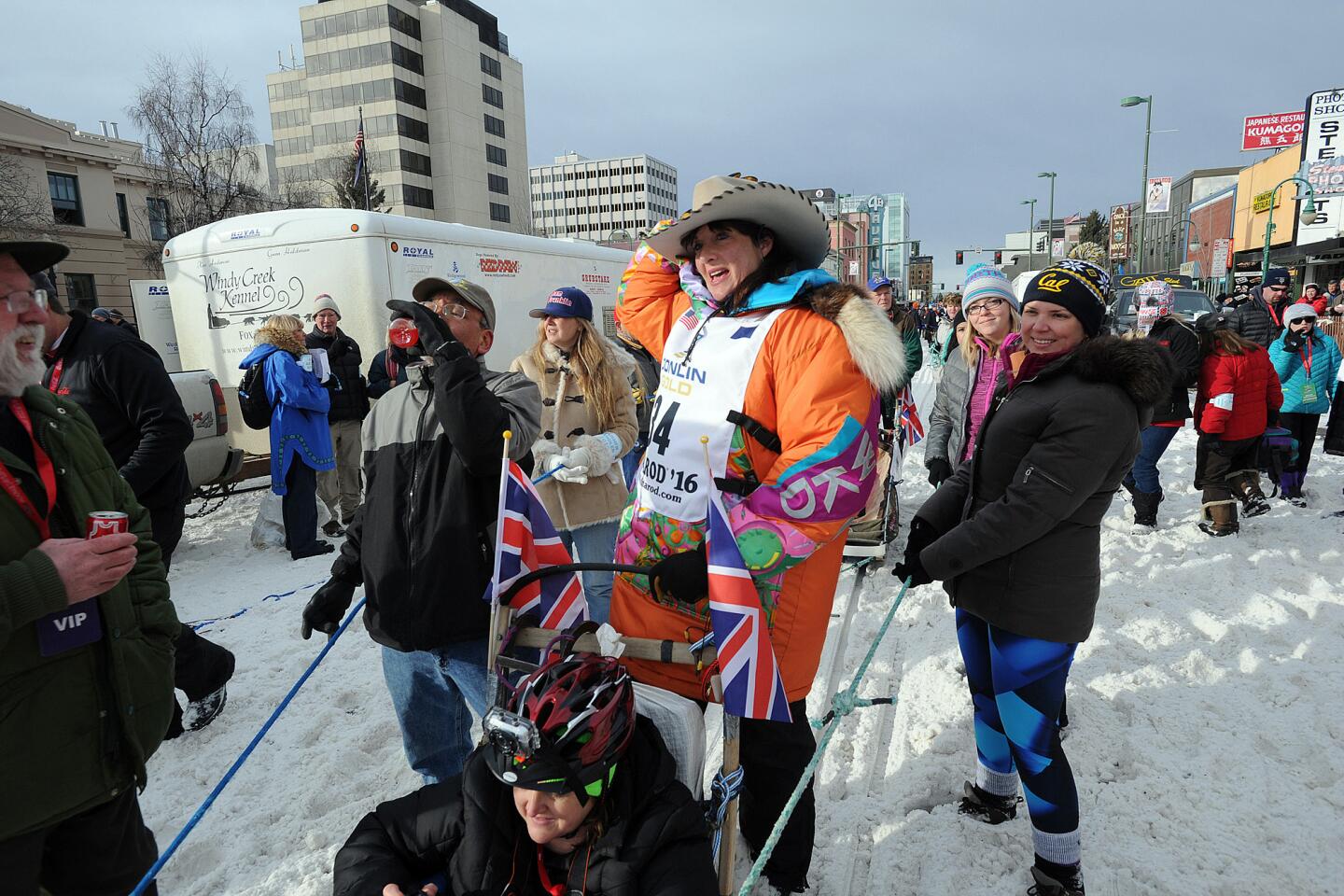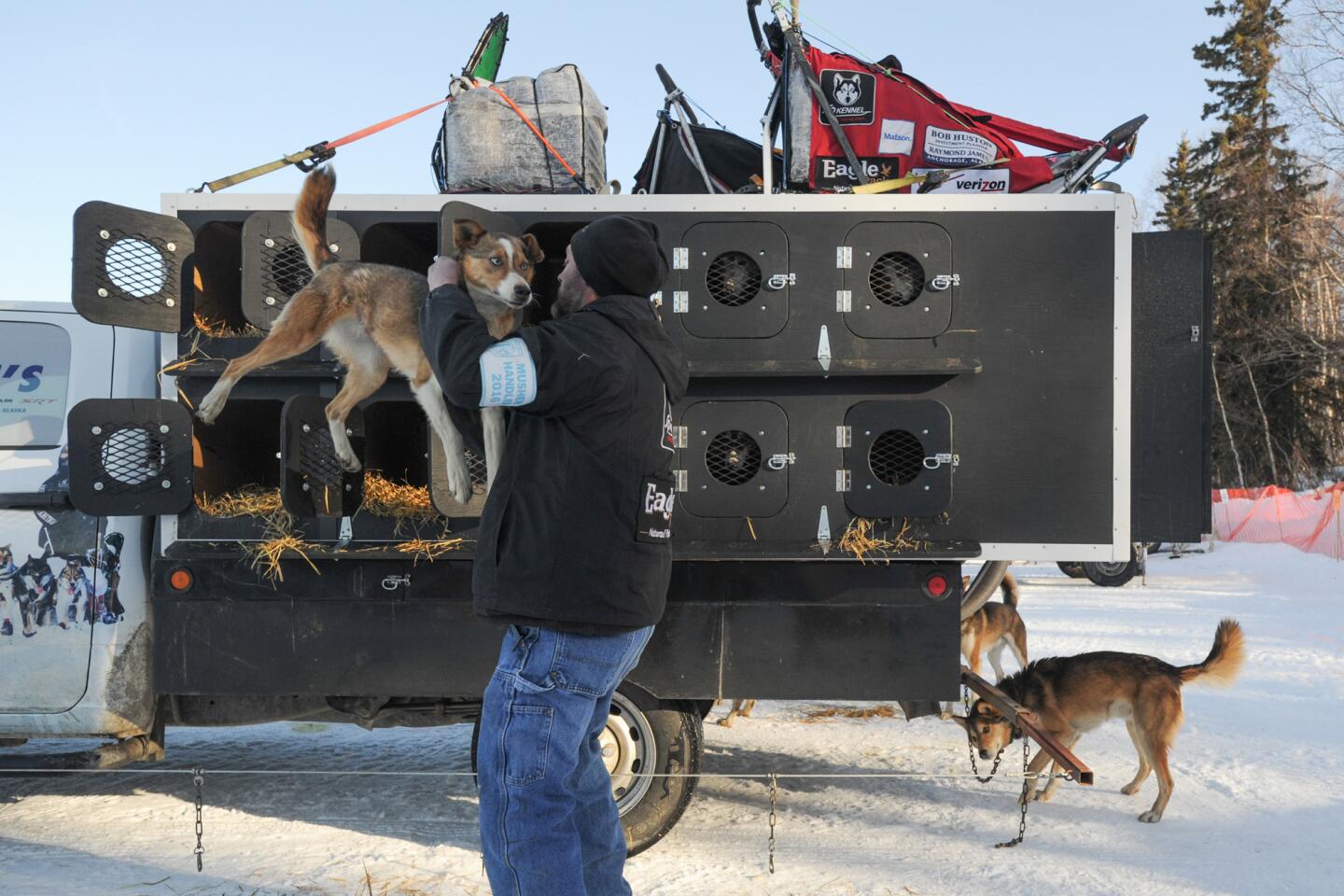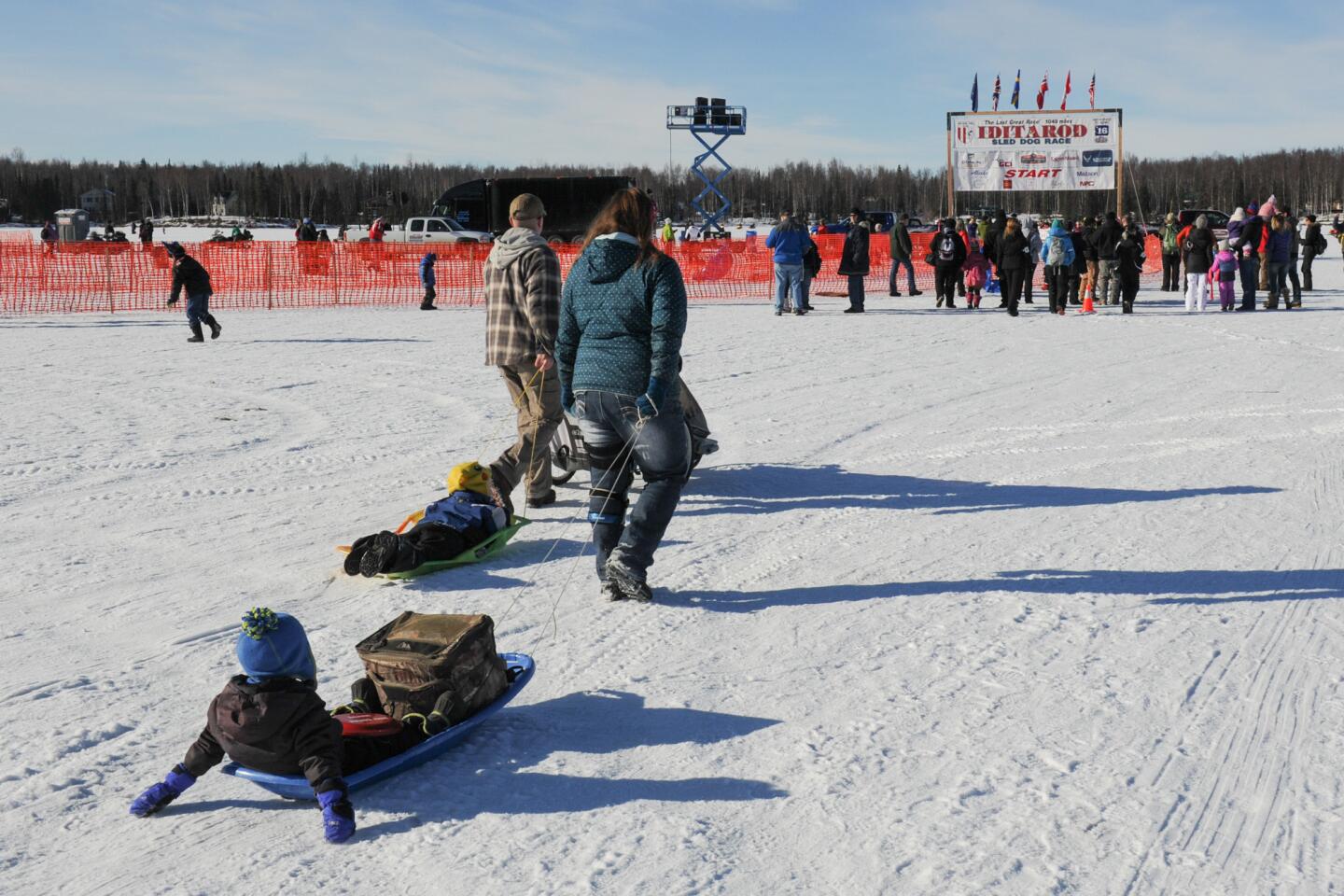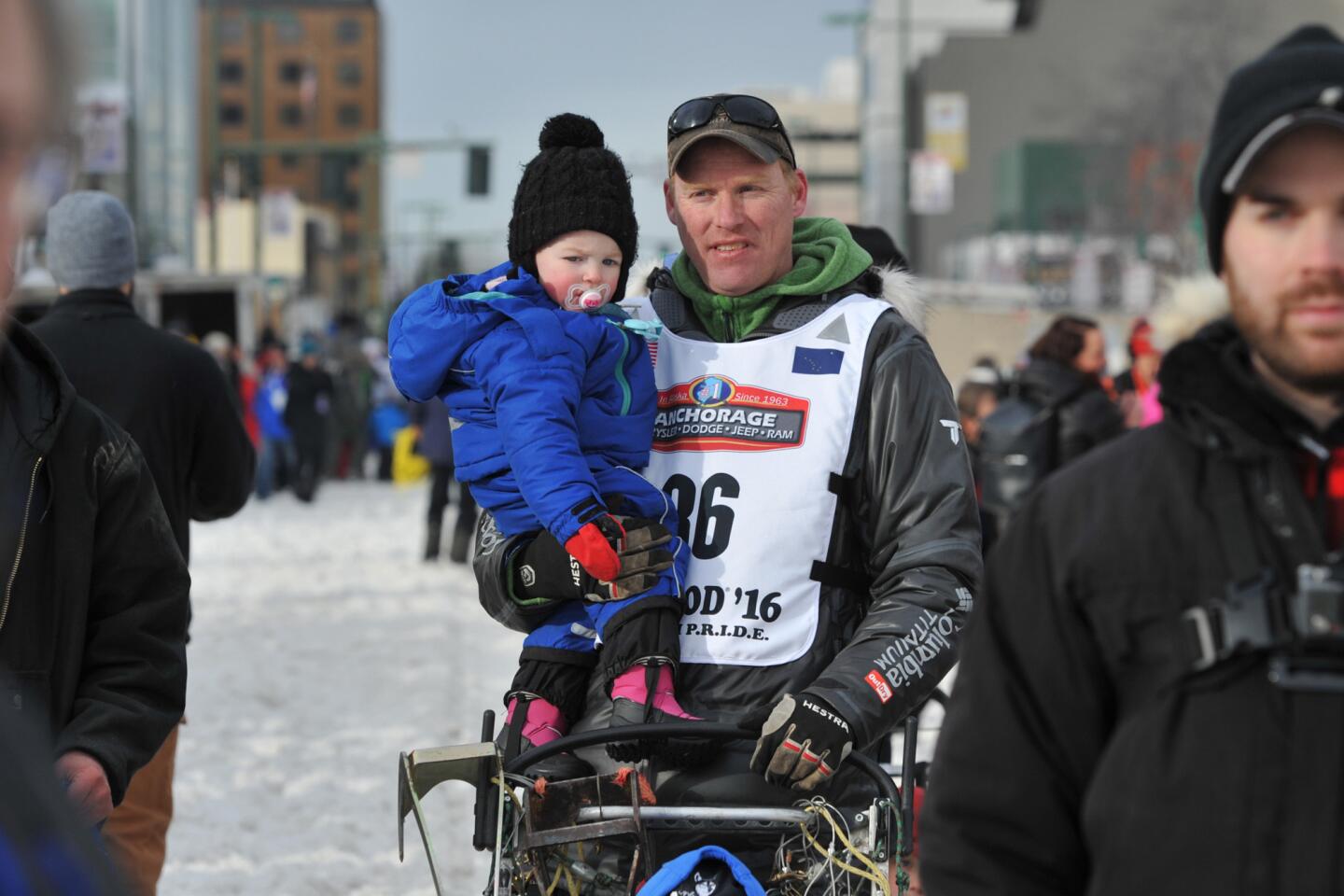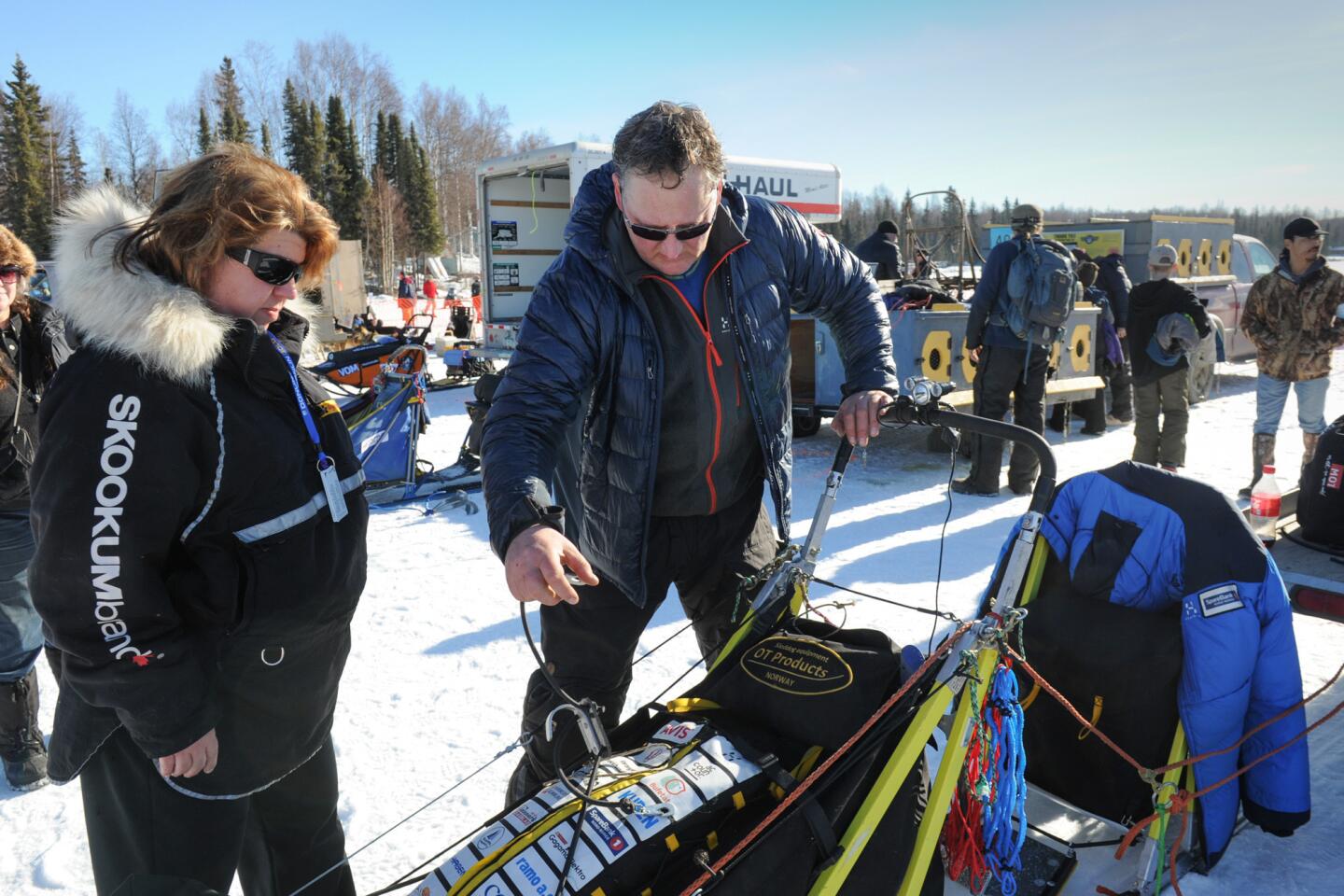In the Iditarod, climate change makes it a year for the record books
- Share via
Reporting from Nome, Alaska — The winters keep getting warmer. The racers keep getting faster.
When Dallas Seavey and his team of sled dogs arrived in this remote old gold rush town on the Bering Sea shortly after 2 a.m. on Tuesday, Seavey celebrated his fourth victory in just five years in the nearly 1,000-mile sprint across the Alaska wilderness that the world knows as the Iditarod dog sled race. At eight days, 11 hours, 20 minutes and 16 seconds, it was the fastest time in Iditarod history — and the second time Seavey set a course record on his way to victory.
Yet race times are not the only records being broken here this year.
Alaska just completed its second-warmest December-February of the last century, and many parts of the state, including Anchorage, the largest city, are seeing their warmest winters ever recorded. The trendline of temperatures dips now and then, but the momentum is steadily heading upward.
“It’s unequivocal,” said Rick Thoman, the National Weather Service’s climate science and services manager for Alaska. “Winters in Alaska are not as cold as they used to be. The cold winters now are in line with the average winters of the 1950s.”
As the winters have warmed, the Iditarod has become not just a colorful Alaska tradition but a vivid window into the uncertainties presented by the changing climate. Over the years, the Iditarod has become Alaska’s most popular sporting event, even as the conditions and imagery surrounding it have shifted.
This year, the ceremonial start of the race in Anchorage was complicated by the fact there was very little snow in the city. That led race organizers to shorten the event and haul snow in by train, only to decide not to use it because it was mixed with too much debris, the race’s executive officer, Stan Hooley, said Monday in Nome. It helped that it happened to snow in Anchorage the day before the ceremony.
“I’m not sure winter ever came to south-central Alaska,” Hooley said.
Last year, low snow prompted officials to move the start of the race 300 miles north to Fairbanks. In 2014, low snow and muddy conditions caused crashes and damaged sleds that ended the race early for some mushers.
“No snow,” Aliy Zirkle, one of the state’s top mushers said at the time. “Zip. Zero. None.”
Then again, low snow meant high speeds.
“2014 was perfect for a fast race,” Seavey said on Tuesday. “That trail was made for a record-breaking — and bone-breaking — race.”
Big winter weather — say, deep snow and 60-mph winds — can make the race much more difficult. Completing it in fewer than nine days is a fairly recent development — early winners needed 20 days — but one which mushers say is likely to become more common.
“The only way it will be won in over nine days again is if it’s a real heavy snow year with a lot of wind,” said Wade Marrs, who finished fourth Tuesday. “Otherwise, it’s just going to be like this all the time.”
But Marrs, who is 25 and one of the race’s rising stars, noted that weather is just one way the Iditarod is changing.
“The mushers and dogs, I wouldn’t say are getting better, but they are learning more about the sport,” he said, gulping down a pork sandwich and caribou stew at the race’s Nome checkpoint shortly after finishing. “They are figuring out better ways of training and preparing.”
Marrs trains his dogs at a kennel near the one Dallas Seavey runs in the town of Willow, which is where the Iditarod officially starts. Seavey has brought a new level of data and precision to the race, training his dogs on a treadmill in a climate-controlled trailer in the summers.
Seavey said after the race on Tuesday that he had developed 20 different tactics for balancing when to run and when to rest his dogs, depending on the conditions and where he is in the race. The idea is to be prepared for the unpredictable.
He called this year’s race “just a good old Iditarod.”
“We had snow; we had wind,” he said. “Not any super, super cold, but this was a normal race that a couple of excellent dog teams just broke the record on.”
The other team that broke the course record this year? The one that was led by Seavey’s father, Mitch Seavey, who finished second, just 45 minutes behind his son. Mitch Seavey won the race in 2004 and again in 2013, a year after Dallas won it for the first time.
Nome, not just the route there, is always part of the Iditarod story as well.
Thoman, with the National Weather Service, noted anecdotal reports of low sea ice in Norton Sound. While the area covered by sea ice can vary, he said, “the quality” of the ice, how continuous and thick it is, has been a concern for mushers and native Yupik and Inupiat subsistence hunters from the area.
One man serving up chicken strips to the hungry race crowd Tuesday did not hesitate to offer an explanation when asked about the open water.
“Global warming,” he said.
Hopkins is a special correspondent.
For more news on global sustainability, go to our Global Development Watch page: latimes.com/global-development
More to Read
Sign up for Essential California
The most important California stories and recommendations in your inbox every morning.
You may occasionally receive promotional content from the Los Angeles Times.
